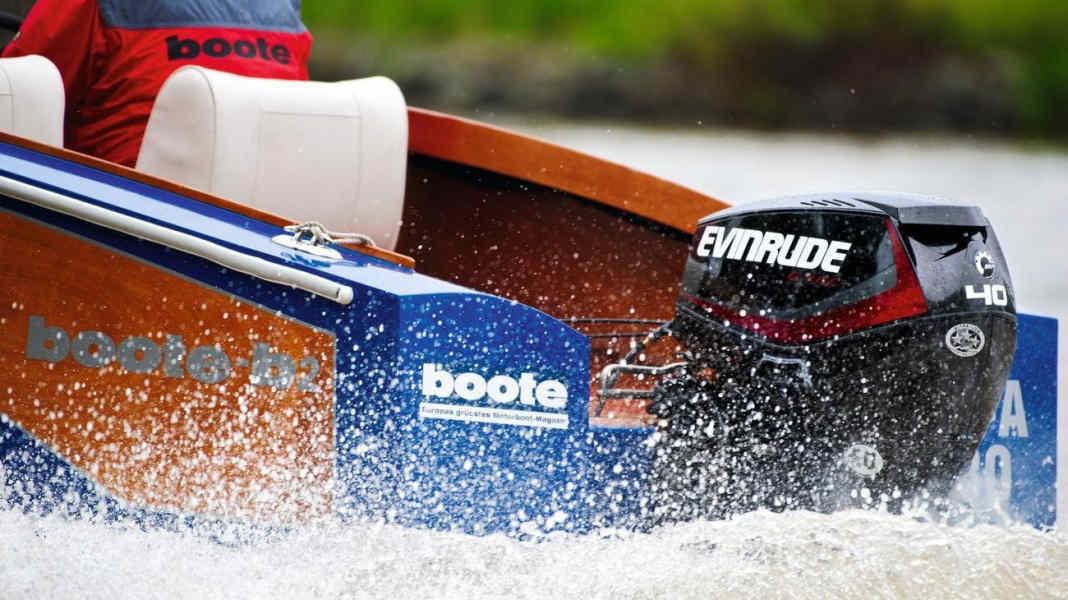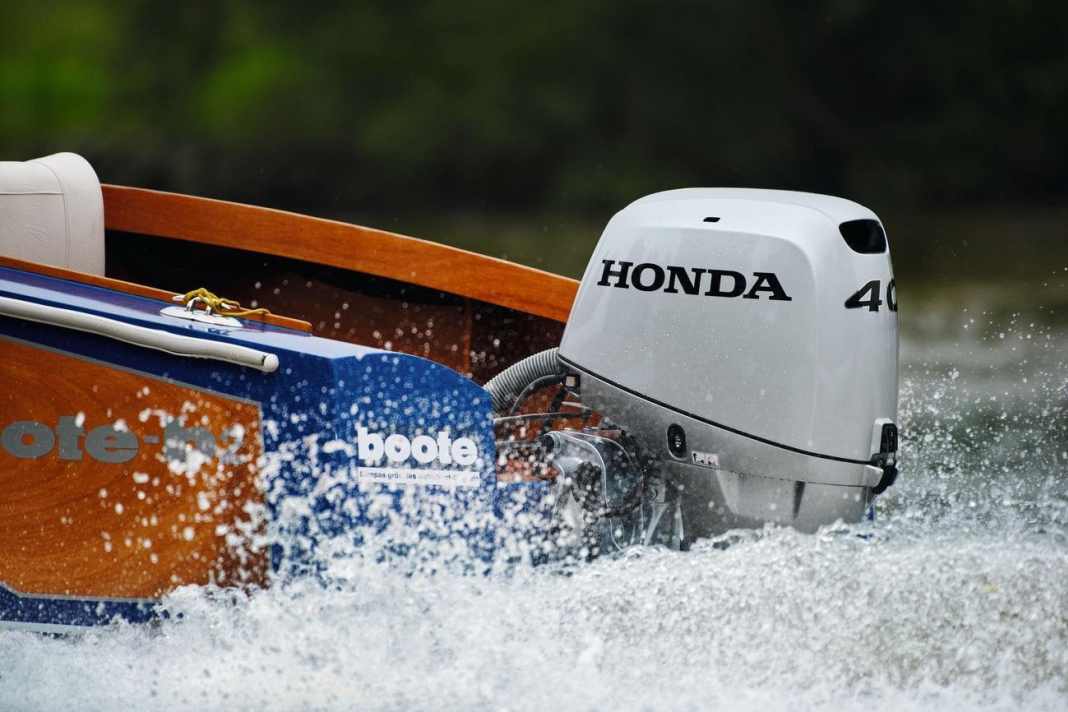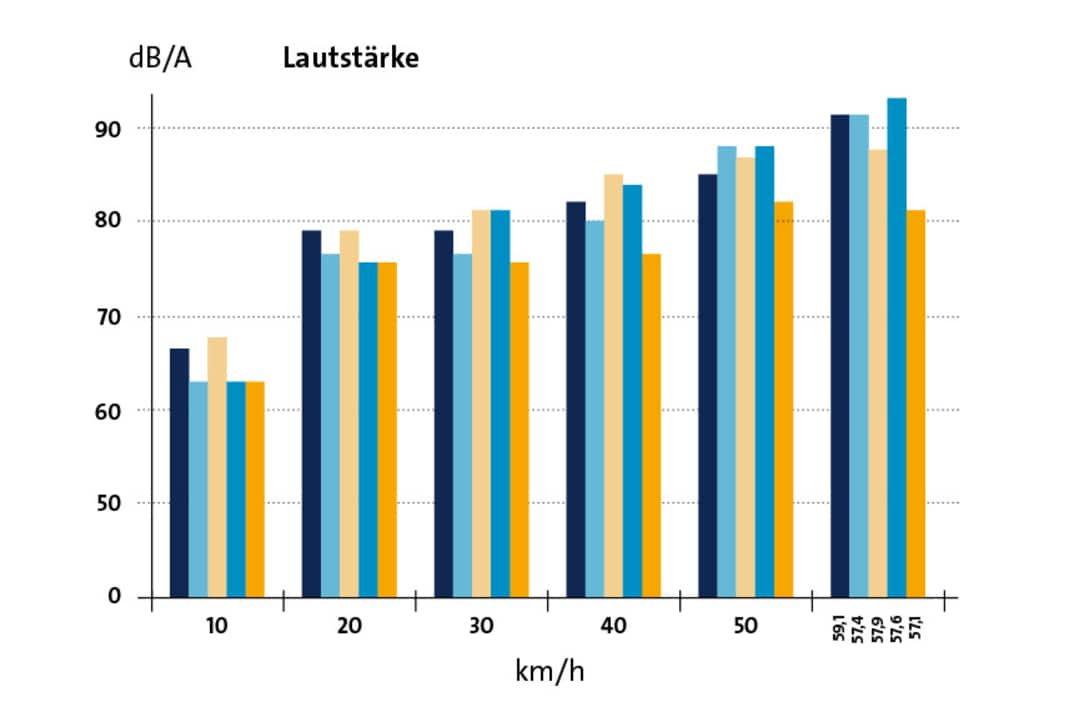
This test appeared in BOOTE issue 9/2016. You can read more recent tests in the magazine.
It has been a whole nine years since we were last under the bonnets of the40 hp class have watched. This fact is almost reason enough for a repeat performance. What's more, a lot has changed in this class in recent years. For example, the lastCarburettor models against modern injection engines and packed with other useful electronics.
To ensure that the look matches the content, some manufacturers have also worked on the external appearance of their engines.
We check what theFresh cell cure and how the representatives of the class fare in competition with each other.
The invitation to the event organised by BOOTEOutboard motor test areEvinrude, Honda, Mercury, Tohatsu and Yamaha followed.






We can therefore confirm the participation of the two-stroke E 40 E-TEC (Evinrude) and the four-stroke BF 40 (Honda), F 40 EFI (Mercury), MFS 40 (Tohatsu) and F 40 (Yamaha). The direct comparison is aboutFuel consumption, noise level, acceleration and top speed. We also look at what is possible with them today thanks to electronics.
Usually, 40 hp engines are attached to the transoms of sports boats, inflatable boats and cabin cruisers with a length of 4 to 6 metres. For this year's comparison test, we were able to use the transom of theBOOTE- b2 self-build boats secure. Its technical data is as follows: Length 4.80 m, width 1.88 m, displacement without engine around 280 kg. The boat made of marine plywood is approved for long-shaft outboards with an output of up to 50 hp. A 25-litre plastic tank serves as the fuel tank.
If you first compare the weight of the engines, it becomes clear: the old rule,that two-strokes are always the lightestbecause they have simpler technology and fewer parts, does not apply in this case. In our test, the Evinrude is actually the heaviest candidate with a measured 113 kg. This is probably due to the fact that it serves as the basis for three performance classes, with 40 hp being the smallest.
Both the 40 hp and the 50 and 60 hp engines from Evinrude use the same basic unit - a common practice in the industry, even if no other manufacturer gets three outputs from one engine in this range. In comparison, the tested Honda and Tohatsu engines are identical to the 50 hp models of their brand.At the top end in terms of performance The 40 hp engines from Mercury and Yamaha are located in the centre of the so-called base engine.
Accordingly, they are also available with 30 hp. Interestingly, all four-strokes weigh approximately the same, just under 100 kg according to the brochure. When weighed in running order, i.e. with oil and propeller, the Tohatsu is the lightest at 100 kg, closely followed by the Honda at 101 kg. Only Yamaha (103 kg) and Mercury (106 kg) weigh a little more.
Another common feature of the four-stroke engines is that they are all three-cylinder engines arranged in series. Each cylinder has two valves for the gas exchange in the combustion chamber, which are controlled by an overhead camshaft. Fuel is supplied by an electronically controlled intake manifold injection system.
As the two-stroke engine is known to work without a valve train, but not without fuel, the Evinrude injects the precisely calculated amount of petrol directly into the combustion chamber. In this way, it burns so cleanly that it fulfils the same exhaust emission standards as the four-stroke engines. Another difference is that it draws its power from just two cylinders. As with the other engines, these are arranged in series.
If the outboard motor does not want to start, first check the fuses and then the spark plugs for electronic injectors. To do this, you should use the manufacturer's on-board tools and get to the plugs as easily as possible. In the case of Tohatsu, this has been done very well. There are even spare spark plugs in the tool kit, and the spark plugs are easily accessible after opening the bonnet. The same applies to the Honda; here, too, you can get to everything that is important without the bonnet.





In terms of equipment and upgrades, the Mercury stands out slightly. With the Honda and Yamaha engines - the latter has an immobiliser as standard - an optional trolling function can be controlled using a panel (Honda) and other display instruments (Yamaha). This is also possible with the Mercury. In addition, the F 40 EFI is fully SmartCraft-capable, which means that a range of additional options are available.
If a special trim sensor is installed, a trim limiter can be set and the new Active Trim system can be connected. An immobiliser is also available, but only for an extra charge. By upgrading the standard instrument or networking with a chart plotter, the engine data of all test candidates can be displayed in such a way that no wishes should remain unfulfilled.
In addition to pure measurement values, the driving behaviour of the combination of boat and motor also plays a role in our test. Result: The smooth running of all models is extremely good.
About the measurements: The results in figures can be found on the previous pages 64 and 65, the comparison graphs (bar charts) on page 68. In terms of top speed, it is noticeable that the results are very close together, with only the Evinrude being able to set itself apart noticeably at around 2 km/h more.
The same applies to the acceleration of the two-stroke engine; on the other hand, it always comes last in terms of fuel consumption. Here, the Honda is the most favourable except at slow and full throttle. In terms of background noise, the Yamaha offers the best comfort.
Let's move on to the prices and scope of delivery. With a purchase price of €6739, the Evinrude is the absolute price breaker. In addition to the engine, the standard scope of delivery includes a switch box for side mounting, mounting material, two round instruments (speed and trim indicator), a 25 litre plastic tank and a propeller of your choice. The "all-round carefree package" is also available when purchasing the Honda (€7899) and the Mercury (€7129).
This means that the standard scope of delivery of the cheapest four-stroke engine in the form of the Mercury F 40 EFI and the most expensive engine in the test, the Honda BF 40, as well as the two-stroke Evinrude E 40 contain everything for a complete installation and tuning of the engine on a boat, apart from suitable Bowden cables and a battery. With the Tohatsu (7700 €) and Yamaha (7775 €), you only have to buy the propeller separately to get the same scope of delivery.
After the purchase come the follow-up costs. The latter should be quite low for the two-stroke, considering that Evinrude specifies a service interval of three years or 300 operating hours. Four-stroke engines require slightly more spare parts and labour over the same period. Depending on the operating hours, the range of work extends from oil changes, including filters of course, to adjusting the valves and checking and replacing timing belts.
In conclusion, there is no one engine for all applications. If you want to save on the purchase price and are prepared to make slight compromises in terms of consumption and noise, the Evinrude E 40 is a good choice. With its super acceleration and the highest top speed in the test, the engine is well suited to pulling water skiers and wakeboarders.
If the purchase decision is based purely on fuel savings in the medium driving range and only secondly on noise, the Honda BF 40 should be chosen. If you prioritise the other way round, the quietest engine in the test, the Yamaha F 40, is a good choice. However, the Mercury should also find many friends due to its good price-performance ratio and easy upgradeability with practical aids.
The Tohatsu scores points with its ease of servicing and proves to be just as economical as the Yamaha in our test, but its noise level is significantly higher, so that it could not quite make it into the upper test segment, neither in terms of the five-year warranty nor the price.

